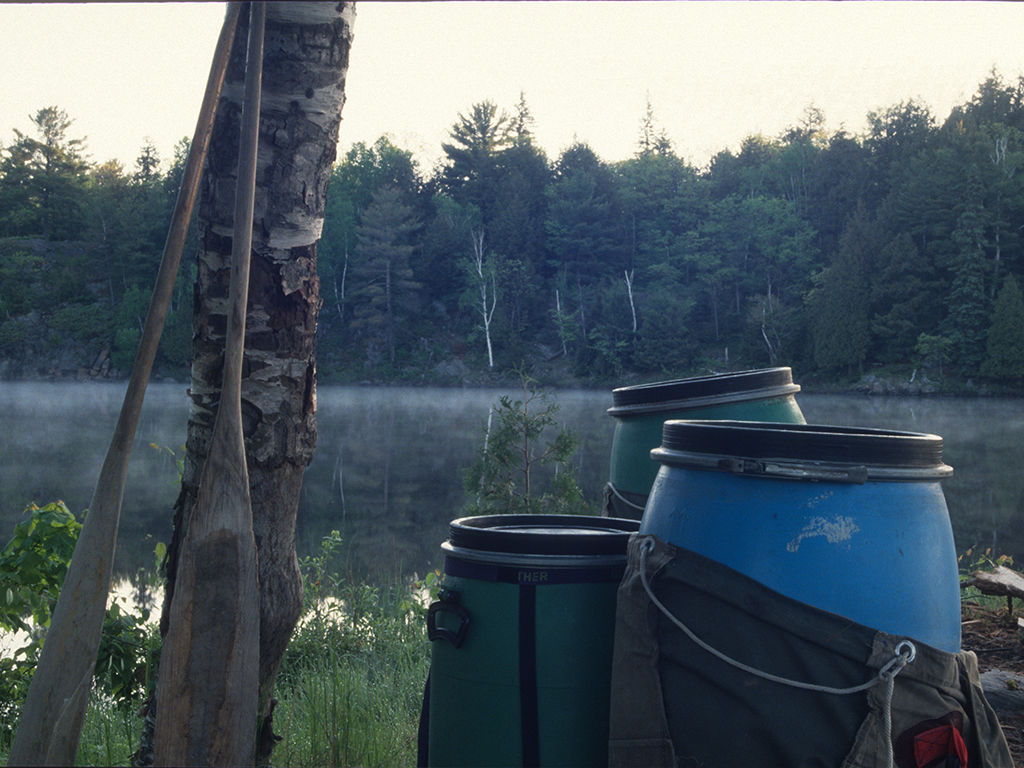When it comes to deciding what gear to pack for a trip, it can be a real dilemma knowing not only that you only have so much room in your boat but once the trip begins there is no going back. If you’ve forgotten something, well, you may have to improvise. That’s why having an equipment list and checking it twice is so important to any successful river journey.
Essential Equipment List
* Waterproof 60L barrels recommended for being waterproof and deterring animals
Tent Barrel
– tent with fly
– thick plastic ground sheet
– sleeping bag
(in dry bag – just in case…)
– sleeping mattresses
(in water resistant sack)
– headlights with extra batteries (in soft case)
– large thick plastic bag
(for a potentially wet tent so that nothing else in the barrel gets wet)
– hammock
(optional – depending on whether it’s that kind of trip or not or how many bugs you can expect)
Clothing Barrel
– stuff sack for each person with their personal clothing
– hiking boots
(each pair inside a plastic bag)
– two toilet paper roll and wet naps in a Ziplock bag
– mosquito nets
(portable mosquito jackets optional)
– waterproof jackets or ponchos
– reading material
Equipment Barrel
– First Aid kit
(basic bandages, painkillers, anti-allergic pills, mole skin, etc…)
– single burner camp stove and bottle of fuel
– tarp, rope, and bungee cords
(a rope tied high between two tries, bungee cords on each corner attached to whatever you can find and two paddles duct taped together for a center pole)
– break-apart or telescopic fishing rod and small case of lures
– folding camp chairs
– folding saw
– canoe repair kit
(including extra canoe hardware such as hangars and bolts)
– basic repair kit
(duct tape, pliers, wire, sewing needle and thread, contact cement, etc.)
– playing cards, candles, compass
Food Barrel
– small grill
– cutting boards – two thin ones
– water filter
– food organized in to plastic bags
(one for breakfasts, one for lunches, and one for dinners)
– coffee mugs
– alcoholic beverages (optional)
(boxed wine, plastic containers of spirits, cans of beer (Heineken seems to have the thickest aluminum – less chance of punctured cans)
Map case
– Buck knife
– mosquito repellent
(Use Muskol – why fool around when your mental state could be in jeopardy?)
– sun screen
– candies
– route maps
(double Ziplocked or waterproofed)
Camera case
(a Pelican case is recommended for DSLR camera equipment – cumbersome on the portage trail but the only case I know of that has protected my camera gear fully submerged many times in Class IV whitewater)
– DSLR camera
– 28-70 mm. lens
– 70-200 mm lens
– 2x teleconverter
– extra batteries and memory cards, notepad, pencil and pen, lens cleaner tissues
– waterproof compact camera in lifejacket
Random Thoughts
– Mark the barrels with duct tape and their corresponding lids (i.e. T for tent, C for clothing so you know where to look for items)
– don’t mix up barrels and their corresponding lids – if you do, the barrel might leak since the individual barrel and lid seal seem to be unique with each other
– lots of carabiners clipped onto the barrel handles for easy access
– On that note, clip everything in (make sure everything is tied in when running whitewater – I use car seat belt straps secured to D rings glued to the sides of the canoe to hold in the barrels – the only times barrels got free was dumping in a long set of Class IV-V whitewater)
-on that note, I tie soft wire through holes in the barrel rings so they don’t snap open – I’ve seen it happen dumping in big whitewater)
– don’t bother packing suture equipment or any other hardcore First Aid equipment unless you are a qualified doctor – duct tape is all you really need to close a wound since all you are trying to do is get the injured party to a hospital – I wouldn’t want to try stitching someone up – might get a little messy)
